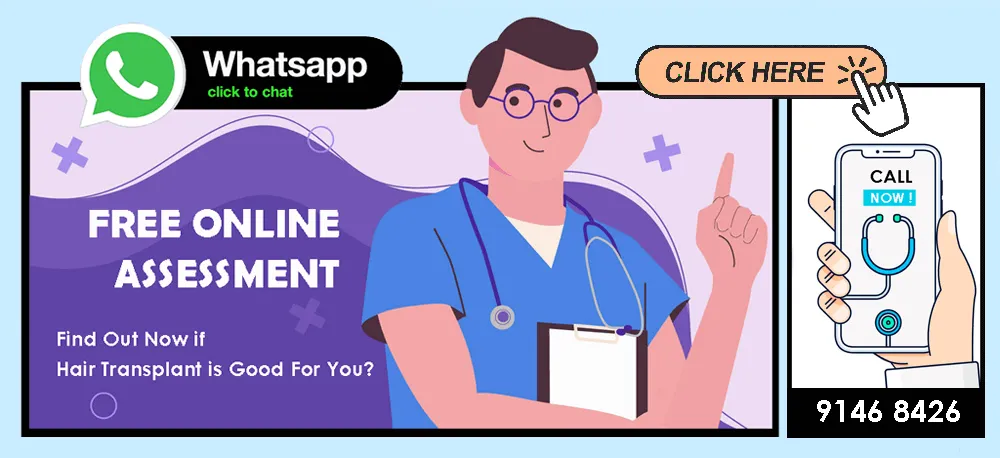Our Protocol for Quick Recovery

Hair transplant is a very safe procedure but not completely risk free. Here the possible Adverse Effects are listed together with our Protocols of Preventive Measure to minimize the risks.
Intraoperative Emergency
This is extremely rare in our level I office Procedure, when only local anesthesia and conscious sedation are used.
Our Preventive Protocol :
All patients are personally examine by our doctor
• General health, allergy, medication are all noted
• Careful selection of patients
• Close monitoring during procedure
• Standby equipment & well trained staff
• Doctor is in office at all time
Swelling Around the Eyes
During incision we inject tumescence to lift the scalp from the bone. After surgery when you resume the upright position this tumescence will drain down to your face and eyes, usually on the third day and lasts a week. This is harmless but unsightly and, once happens, nothing really helps.
Our Preventive Protocol :
Our tumescence is specially formulated to prevent swelling
• Use head band for 3 days except at sleep
• Avoid bending and eating salty food
• Massage any forehead swelling sideways
• Cool pack placed over the forehead for 15 minutes
Wound Infection
Our center infection rate is below 1%. We have stopped the routine use of antibiotic for over 1 year.
Our Preventive Protocol :
Selective use of prophylactic antibiotic in high risk patients (e.g. diabetes)
• Antiseptic hair wash before surgery
• Operate under an aseptic environment
• Follow-up on day 1 and 7 after surgery
• Meticulous wound care
• Avoid sweating from strenuous exercise the first week
• Frequent hair wash at home
• Prompt recognition and treatment
Numbness over the Transplanted Area
Making incisions temporarily traumatize the very superficial nerves. This may lead to numbness or pins-and-needles sensation. In a sense it is good as you won't feel any pain in the transplanted area. The course varies amongst patients, lasting from weeks to months. It does not affect your daily activities, felt only when touched. Full recovery is the rule.
Our Preventive Protocol :
The generous use of tumescence
• Set a depth guard to the blades to avoid too deep penetration
• Keep the entry angle of the blade rather flat to the skin
• Avoid overdose of local anesthesia
• Reassurance of full recovery
Pustules & Pimples
Small pimples or pustules are commonly found at 1 month and the 4 month after surgery. This is a benign condition and would not affect the final result. The old hair shaft detached from the graft would causes the following problems:
• Irritating the skin (foreign body reaction)
• Blocking the new hair from coming out
• Ingrown hair
Our Preventive Protocol :
Treatment is rather simple
• Squeeze out the pus and cleaned with alcohol or betadine
• Remove any hair spicule if loosen
• Maintain good hygiene with daily hair washing
• Avoid tight cap, hat, helmet, or hairpiece
• Apply antibiotic ointment as prescribed
• On rare occasion oral antibiotic may be needed.
Hair Loss around the Donor Wound
Shedding of hair below and above the sutured line, usually occurs 2-4 weeks after surgery. This is extremely unpredictable though the risk is higher if the wound is undermined and closed under tension. Full recovery is the rule but may take 4 months to re- grow.
Our Preventive Protocol :
Every patient is warned
• Keep at least 1 inch of hair at the donor area for cover-up
• Apply Minoxidil to the area before and after surgery may help
• Do not cut hair for a month after surgery.
• Reassurance of full recovery
Hair Loss around the Transplanted Area
This is the well known Shock Loss with shedding of existing hair within and around the transplanted area.Usually affects women with weak miniaturized hairs. Hair loss begins about 1 month and continue for 2-3 months. Re- growth may not be a 100%. Appearance improves when the transplanted hairs start to grow.
Our Preventive Protocol :
Warn every patient. Those unable to tolerate shock loss are refused surgery
• Select patients carefully, and exclude those with diffuse hair thinning
• Apply Minoxidil to the area before and after surgery
• In men shaving the transplanted area is the best prevention
• Avoid transecting pre-existing hair follicles during incision
• Avoid dense packing
• Women may wear a hair piece while waiting for hair re- growth.

